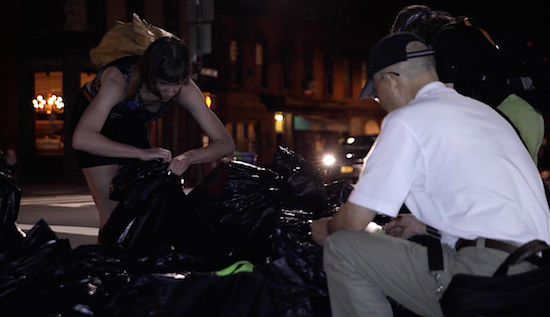VIDEO: Downtown Brooklyn dumpster-diving tour shows the face of food waste

Freegans exploring Downtown Brooklyn’s street-side commercial garbage. Eagle photos by Liliana Bernal
Former Spanish teacher Janet Kalish, who has been the face of “freeganism” in New York for more than a decade, digs into a black garbage bag, taking out what she says is good food that never should have been put in the trash.
On a recent Tuesday, she and two other freegans explored Downtown Brooklyn’s street-side commercial garbage. Bare-handed, the group patted down the first bags to detect which ones contained food. Then they dived in.
“Sometimes people dumpster dive just for survival … and just to save themselves money but they don’t necessarily all have a plan about trying to stop all the waste,” Kalish said.
